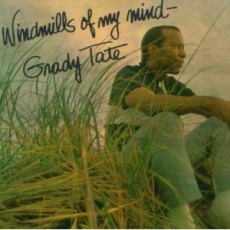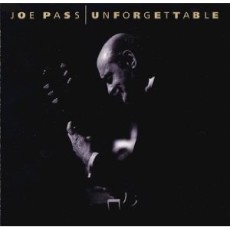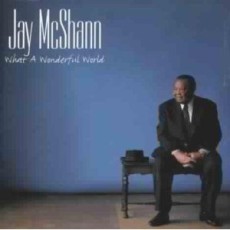
Daily Dose Of Jazz…
Onzy Matthews was born in Fort Worth, Texas on January 15, 1936, grew up in Dallas until he was 14, when his mother pulled up stakes and moved to Los Angeles for a better job. He graduated from high school at 16 and had already decided he wanted to sing. Nearly every day he walked to a nearby park, where he could play piano for hours in the recreation building.
Augmenting his early gospel roots with healthy doses of smooth California jazz and big band music, Matthews taught himself to accompany his singing on piano until he realized he needed arrangements.
He attended Westlake College of Music, studied ear training and harmony, started singing with a dance band and learning about arranging. After several years of performing, attending concerts and asking questions he had 21 original songs arranged for big band.
His musical career sprang from eight bars of music. As an aspiring singer, pianist and composer in 1963, a young Mr. Matthews gave his first professional arrangement to Les Brown for a tryout with the Band of Renown. Out of the arrangement came 8 bars that sounded good to Onzy and Les Brown advised him to take those 8 bars and start from there. Doing so he went on to become one of the most sought-after arrangers in jazz and pop music. It was later through Dexter Gordon that these first twenty-one were played by the best musicians in Hollywood that turned into a regular Wednesday night jam session. The word spread and he started getting courted by record labels to work with their artists.
Onzy’s first major arranging job was on Lou Rawls’ album Black & Blue, followed by his debut as a leader in 1964 on “Blues With A Touch Of Elegance” for Capitol. About a year later, with his career in full swing, he held a guest spot on a New York radio show hosted by mercer Ellington who introduced him to his dad, friendship was struck and four years later became collaborators, filling the void from Billy Strayhorn’s death.
Matthews tailors the arrangements according to the empathy of the artist by listening to the artist and arranging to bring out things in them they weren’t aware of. This was his magic. After Ellington death in ’74, he moved to Seattle, formed a big band for three years moved between Texas and New York and finally moved to Paris in ’79, put together another big band, played with Miles Davis and finally moved back to Dallas in 1994.
Onzy D. Matthews, whose 35-year career had him working with some of jazz’s most notables, was discovered in his Dallas apartment passed away at his typewriter by jazz singer Jeanette Brantley and her husband Hans Wango on November 15, 1997. He was 67.

Daily Dose Of Jazz…
Grady Tate was born January 14, 1932 in Durham, North Carolina who began singing at age four, drums at five. However music was not in his immediate future as he earned a degree from North Carolina Central University with a degree in English literature/drama, a minor in psychology and taught English and speech in Washington, DC. Fortunately for the jazz world his desire to pursue an acting career lead him to New York City and the American Academy of Dramatic Arts and once in New York his reputation as an outstanding musician resulted in work with Quincy Jones.
Grady Tate’s drumming helped to define a particular hard bop, soul jazz and organ trio sound during the mid 1960’s and beyond. His slick, layered and intense sound is instantly recognizable for its understated style in which he integrates his trademark subtle nuances with sharp, crisp “on top of the beat” timing (in comparison to playing slightly before, or slightly after the beat). The Grady Tate sound can be heard prominently on the many classic Jimmy Smith and Wes Montgomery albums recorded on the Verve label in the 1960s.
He has been a member of the New York Jazz Quartet, the Tonight Show with Johnny Carson for six years, and his most widely heard vocal performances are the songs “I Got Six”, “Naughty Number Nine”, and “Fireworks” from Multiplication Rock and America Rock part of the Schoolhouse Rock series.
Grady Tate’s popularity as choice sideman of accomplished musicians is due to his remarkable intuitiveness and ability to make any style of music swing tastefully, and his interpretation of many different genres of music, in which he creates his own unique style of jazz led him to work with a host of talent, the short list including Lionel Hampton, Sarah Vaughan, Jimmy Smith, Grant Green, Stanley Turrentine, Lena Horne, Astrud Gilberto, Ella Fitzgerald, Cal Tjader, Bill Evans and Stan Getz.
Grady Tate, baritone vocalist and drummer has been on the faculty of Howard University since 1989.

Daily Dose Of Jazz…
Joe Pass was born Joseph Anthony Jacobi Passalaqua on January 13, 1929 in Brunswick, New Jersey but was raised in Johnston, Pennsylvania. Inspired by Gene Autry’s portrayal of a guitar-playing cowboy. His father gave him his first guitar on his 9th birthday and encouraged him to pick up tunes by ear, play pieces not specifically written for guitar and practice scales leaving no spaces between the notes of the melody.
As early as 14, Joe started gigging with bands fronted by Tony Pastor and Charlie Barnet as he honed his guitar skills and learned the music business. He began traveling with small jazz groups, eventually ending up in New York City. Unfortunately, he fell victim to drug abuse spending a good portion of the 1950s in relative obscurity, reappearing only after a two-and-a –half year stay in rehab at Synanon that resulted in the 1962 album “The Sounds of Synanon”.
Throughout the sixties Pass recorded a series of albums for the Pacific Jazz label, received Downbeat magazine’s “New Star Award” in ’63, toured with George Shearing, was a sideman with Louis Bellson, Frank Sinatra, Sarah Vaughan, Joe Williams, Della Reese and Johnny Mathis, and worked on TV shows including The Tonight Show with Carson, Merv Griffin, Steve Allen and others.
By the early 1970s, Pass and guitarist Herb Ellis were performing together regularly at Donte’s in Los Angeles, a collaboration that led to the recording of Jazz/Concord with Ray Brown and Jake Hanna in tow. During this time he also collaborated on a series of music books, and his Joe Pass Guitar Style is considered a leading improvisation textbook for students of jazz.
In 1970 Norman Granz signed pass to his Pablo records in which he released as a leader and worked with Benny Carter, Milt Jackson, Herb Ellis, Zoot Sims, Duke Ellington, Dizzy Gillespie, Count Basie and many, many others. In 1974, along with Oscar Peterson and Niels-Henning Orsted Pederson they won a Grammy with their album “The Trio” for Best Jazz Performance by a group. Throughout the late 70sto mid 80s, Joe and Ella Fitzgerald would record six albums together as her career was nearing its end. In 1994, guitarist Joe Pass died from liver cancer in Los Angeles on May 23rd at the age of 65.
More Posts: guitar

The Jazz Voyager
The Nitch Jazz Club: McCarthy Hill, P.O.box 5878 Accra North, Ghana / Telephone: 233277422667 and Fax: 233277422667 / Contact: Mr.Tony Lawal. The club is open weekdays from 9:00pm/21.00h and on weekends the music begins at 7:00pm/19.00h. The Nitch Jazz Club is situated where the guests can look at the sea while they listen to the music.

Daily Dose Of Jazz…
Jay McShann, born James Columbus McShann on January 12, 1916 in Muskogee, Oklahoma began played the piano from the age of 12. His primary education came from Earl “Fatha” Hines late-night radio broadcasts from the Grand Terrace Café. Leaving home he spent time at college and working with bands throughout Oklahoma, Arkansas, Arizona and New Mexico.
In the 1930 Jay moved to Kansas City working with both local groups and his own band with his 1938 band comprised of Charlie Parker, Bernard Anderson, Al Hibbler, Paul Quinichette, Earl Coleman, Ben Webster and Walker Brown, creating a music that would become known as the Kansas City sound.
Nicknamed Hootie, it was during the 1940s that he stood at the forefront of the blues and hard bop jazz musicians mainly from Kansas City. His first recordings were all with Charlie Parker, the first as “The Jay McShann Orchestra” on August 9, 1940. After World War II he began to lead small groups featuring blues shouter Jimmy Witherspoon. Witherspoon started recording with McShann in 1945, and fronting McShann’s band, and had a hit in 1949 with “Ain’t Nobody’s Business”.
Jay McShann was inducted into the Blues Hall of Fame, was nominated twice for a Grammy Award, performed regularly with violinist Claude Williams and continued to recording and touring into the nineties around Kansas City and Toronto, Ontario. The blues and jazz pianist Jay McShann, whose career spanned more than sixty years, passed on December 7, 2006, at St. Luke’s Hospital in Kansas City.

